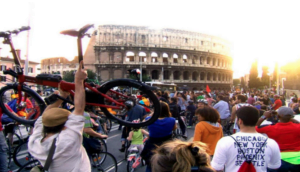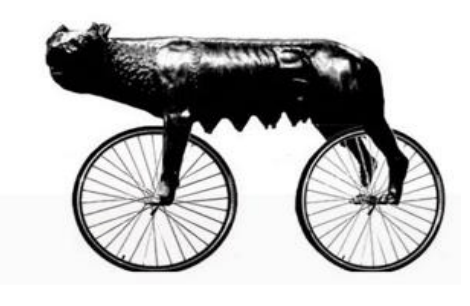Combining cycling and public transport in the Eternal City
Horizontal partners can play a critical role in facilitating collaboration and networking among different stakeholders involved in the project. They can help to establish partnerships with other organizations, institutions, or agencies that have complementary expertise or resources, which can further strengthen the project's impact and sustainability. By fostering partnerships and promoting knowledge-sharing among stakeholders, horizontal partners can help to create a supportive ecosystem for the project and ensure its long-term success. Additionally, horizontal partners can contribute to the project's monitoring and evaluation, by providing input and feedback on the project's progress and outcomes. Through their independent perspective and expertise, horizontal partners can help to identify potential challenges or gaps in the project implementation and suggest corrective actions to address them. This can help to ensure that the project remains on track and achieves its intended objectives. In conclusion, the role of a horizontal partner within an EU-funded mobility project is essential for enhancing the quality, effectiveness, and sustainability of the project. By providing technical assistance, facilitating collaboration, and contributing to monitoring and evaluation efforts, horizontal partners can help to maximize the impact of the project and ensure its long-term success.
Cycling and active mobility as a whole have an important role to play in the further development of public transport systems. It can serve as a fast and easily accessible option for public transport users to complete the “first mile” and/or “last mile” of their trips. Just like everyone else, commuters enjoy their comfort and providing them with an efficient and convenient way to use sustainable transport modes from start to finish increases the likelihood of them choosing this option. As such, cycling and public transit go hand in hand and each reinforces the usage of the other.
Cycling also has the benefit of making public transport accessible to a larger population across a wider area. Bicycles increase the range of accessible public transport stations and multimodal hubs in two main ways:
- by making the transport time shorter than if the users were to walk.
- by allowing more flexibility and being more cost-efficient than if a fixed (or on-demand) public transport line was used to reach the station.
The European Cyclists Federation is focused on 10 measures in 6 different cities. These consist of creating multimodal hubs where active modes and public transport meet, developing incentive packages to support multimodality, enabling public transport in peri-urban areas, campaigning for sustainable modes of transport (including public transport and active modes) and, finally, enhancing multimodal interconnections and integration.
This time they put Rome in the spotlight with a fine piece written by ECF's Holger Haubold assisted by Roma Servizi per la Mobilità, Roma Capitale, and Eurocities
Here is the full article "Combining cycling and Public Transport in the Eternal City: How the UPPER project brings solutions to Rome’s mobility challenges"

